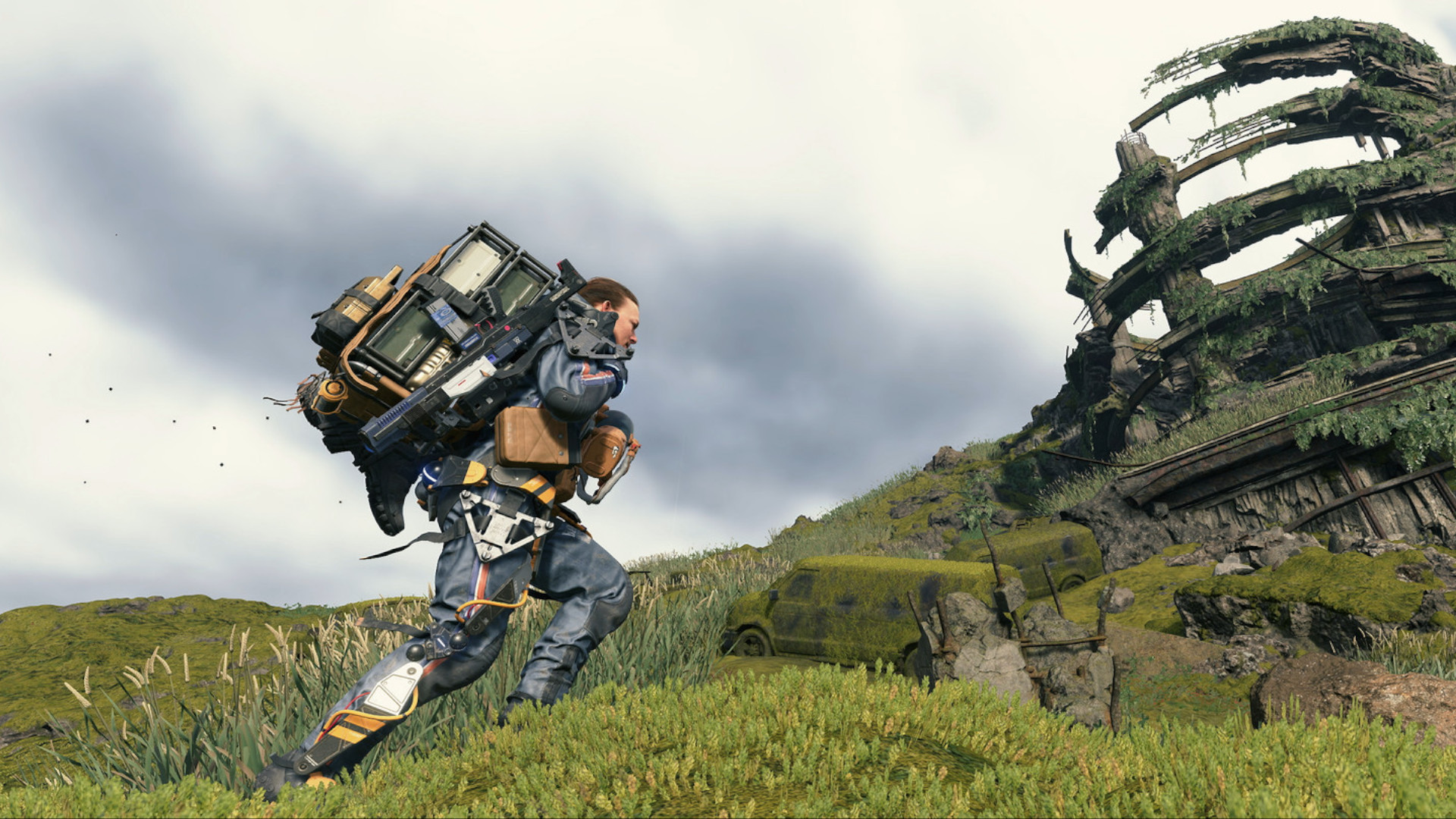
(Image credit: Kojima Productions)
Death Stranding 2: On the Beach offers a stunning open world that’s easy to overlook. In the past, freely exploring vast landscapes was a novelty, as seen in GTA 3. Today, open worlds are almost expected, making it more surprising when blockbuster games don’t feature them. Despite sometimes feeling tired of this trend, Death Stranding 2 revitalizes the genre, emerging as one of the best open world experiences in my opinion.
We live in an era brimming with games, expanding our backlog of great titles we may never fully explore. ‘Open world bloat’ can be a genuine concern, with repetitive missions making travel between action-packed moments feel like a mere time-filler. Admittedly, Death Stranding 2 leans into this concept. However, its unique presentation makes it one of the few open world games that justifies its design.
In Death Stranding 2, the vast open world is central. You play as Sam Porter Bridges, a post-apocalyptic courier navigating a world ravaged by the titular death stranding. Your mission is to manage deliveries across dangerous terrains, requiring you to actively engage with your environment. This immersion is something I deeply appreciated when writing my Death Stranding 2 review.
Your decisions impact your journey, making each path feel uniquely yours. This series demands thoughtful planning for every package and path. Should you travel lightly for speed or prepare for weather changes? Do you stealthily pass through enemy camps, or confront them head-on? These choices, and their consequences, create a sense of forging your personal path forward.
The map, spanning both Mexico and Australia, is meticulously crafted, consistently challenging players to pause and ponder. Even if you loved the first Death Stranding, the sequel leverages intricate designs to emphasize moments that demand strategic thinking. From perilous dunes that threaten your bike’s balance to maze-like crags, each map section requires a unique approach.
Overconfidence can lead to reckless tumbles down hills or over stones without proper balance. Death Stranding 2 is most perilous when you’re overconfident. There are ways to mitigate these challenges, though. Vehicle upgrades ease travel hardships, and collaborative structures like bridges or ziplines, built by fellow players online, simplify difficult routes.
Even when utilizing these tools, you’re still actively participating in the open world. Whether trekking solo or driving a cargo-laden truck on restored roads through breathtaking landscapes, every decision is meaningful. Sharing these infrastructure improvements with others becomes a collective triumph.
Beneath the game’s sci-fi horror plot, which involves connecting Australia to a chiral network, the real motivation is mastering delivery routes. You learn how different waypoints, from individual preppers to major delivery centers, fit into your strategy. Navigating through Mexico often involves smaller decisions like where to place climbing anchors, but conquering the vast Australian map gradually builds a profound sense of mastery. Soon, you’ll be weighing how to tackle mountaintop inclines during intense blizzards.
The evolution of your skills in Death Stranding 2 occurs almost subconsciously, driven by repeatedly simple tasks like package delivery. This gradual mastery, akin to honing a craft like playing guitar or cooking regularly, is deeply satisfying.
By the game’s conclusion, the routes become second nature. Notably, a specific hiking path with steep inclines must be crossed multiple times in the story. Initially daunting, it soon becomes second nature. Death Stranding 2 ensures that your growth complements the high-tech gadgets you acquire, enhancing your skills rather than replacing them.
In any other game, the concept of objectives might seem daunting – forgive me, gaming gods, for as much as I adore Grand Theft Auto: Vice City, the taxi missions are less than enjoyable.
Most open world titles use settings as backdrop, offering rambles that often begin mindlessly. While auto-travel or following a waypoint may sometimes be relaxing, they aren’t always engaging. Death Stranding 2, however, centers entirely on meaningful world interaction, continuously working to improve without a specific mission in sight.
Even without building structures, repeated use of a path by many players eventually creates a well-worn trail – a communal legacy in this immersive world. Death Stranding 2 has become a personal favorite for online play, despite the absence of direct player interaction. Its open world succeeds by fully embracing expert design, wielding carefully curated challenges that occasionally frustrate but ultimately empower players to overcome them.
The sense of mastery over this world, feeling confident in every traversal, is unmatched. In a realm of digital domains, that’s something truly special. If you’re eager to embark on mastering this captivating landscape, check out our Death Stranding 2 tips. Or, if you’re nearing the finale, consult our Death Stranding 2 ending explained guide to refine your understanding.